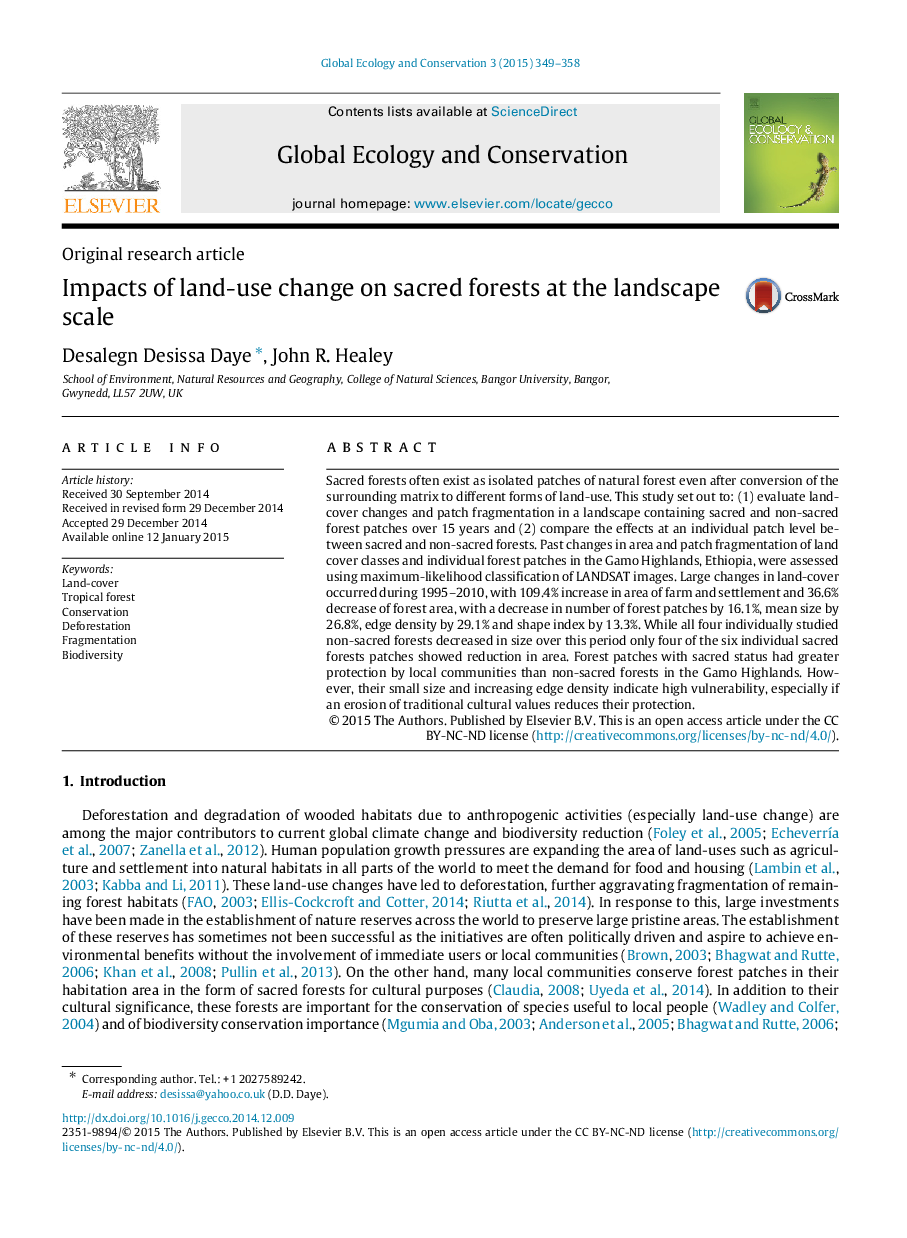| Article ID | Journal | Published Year | Pages | File Type |
|---|---|---|---|---|
| 4379572 | Global Ecology and Conservation | 2015 | 10 Pages |
Sacred forests often exist as isolated patches of natural forest even after conversion of the surrounding matrix to different forms of land-use. This study set out to: (1) evaluate land-cover changes and patch fragmentation in a landscape containing sacred and non-sacred forest patches over 15 years and (2) compare the effects at an individual patch level between sacred and non-sacred forests. Past changes in area and patch fragmentation of land cover classes and individual forest patches in the Gamo Highlands, Ethiopia, were assessed using maximum-likelihood classification of LANDSAT images. Large changes in land-cover occurred during 1995–2010, with 109.4% increase in area of farm and settlement and 36.6% decrease of forest area, with a decrease in number of forest patches by 16.1%, mean size by 26.8%, edge density by 29.1% and shape index by 13.3%. While all four individually studied non-sacred forests decreased in size over this period only four of the six individual sacred forests patches showed reduction in area. Forest patches with sacred status had greater protection by local communities than non-sacred forests in the Gamo Highlands. However, their small size and increasing edge density indicate high vulnerability, especially if an erosion of traditional cultural values reduces their protection.
